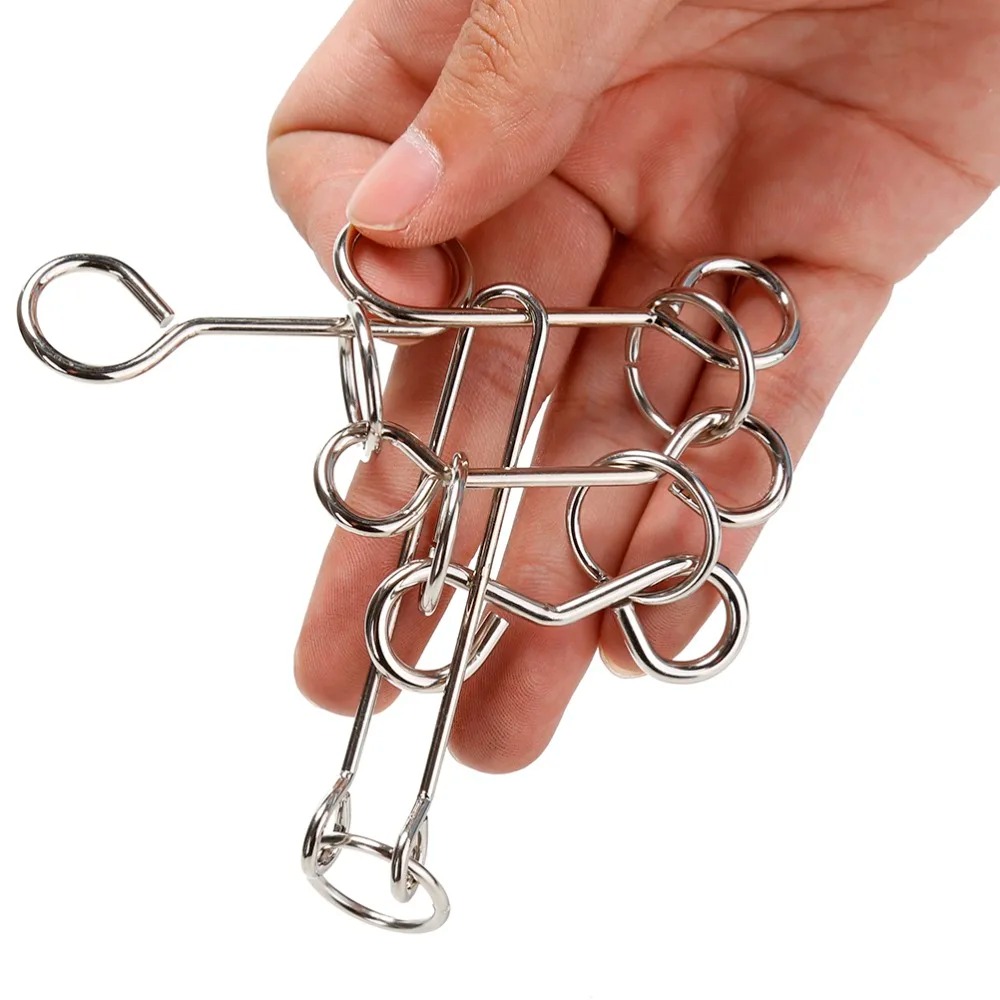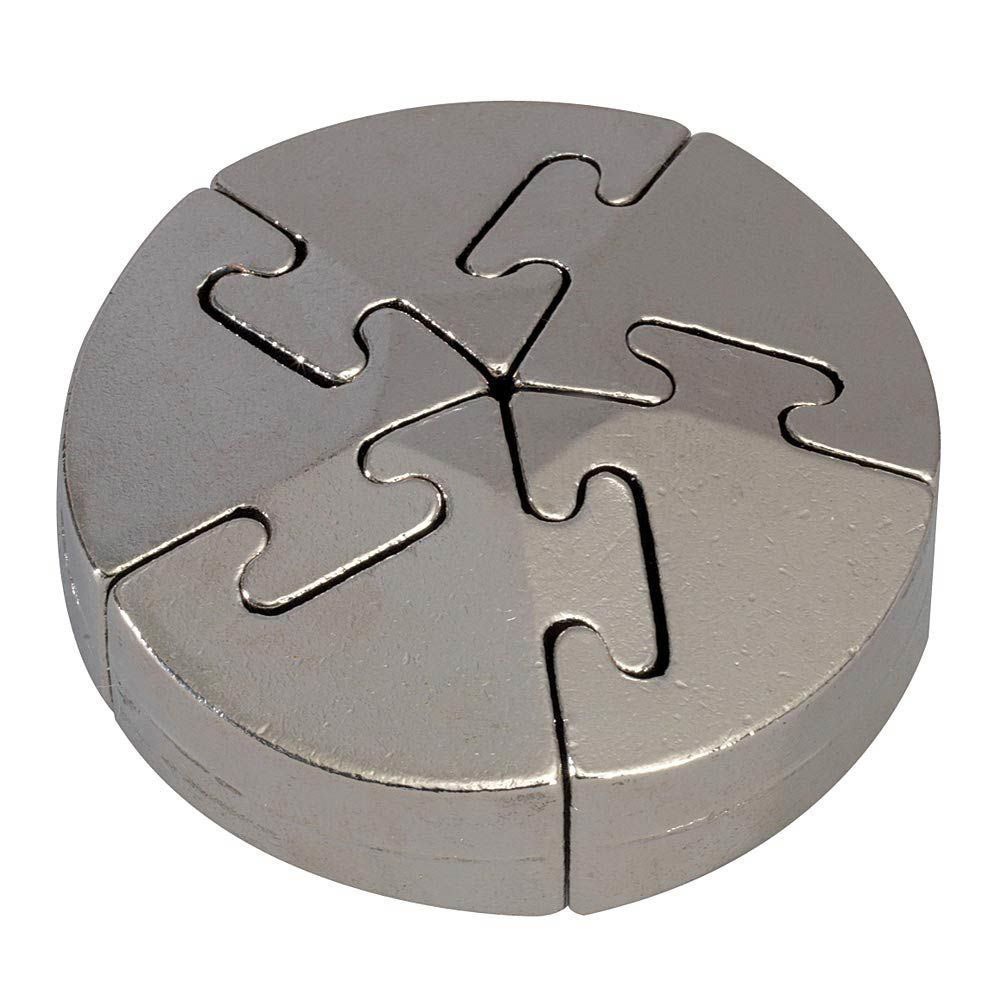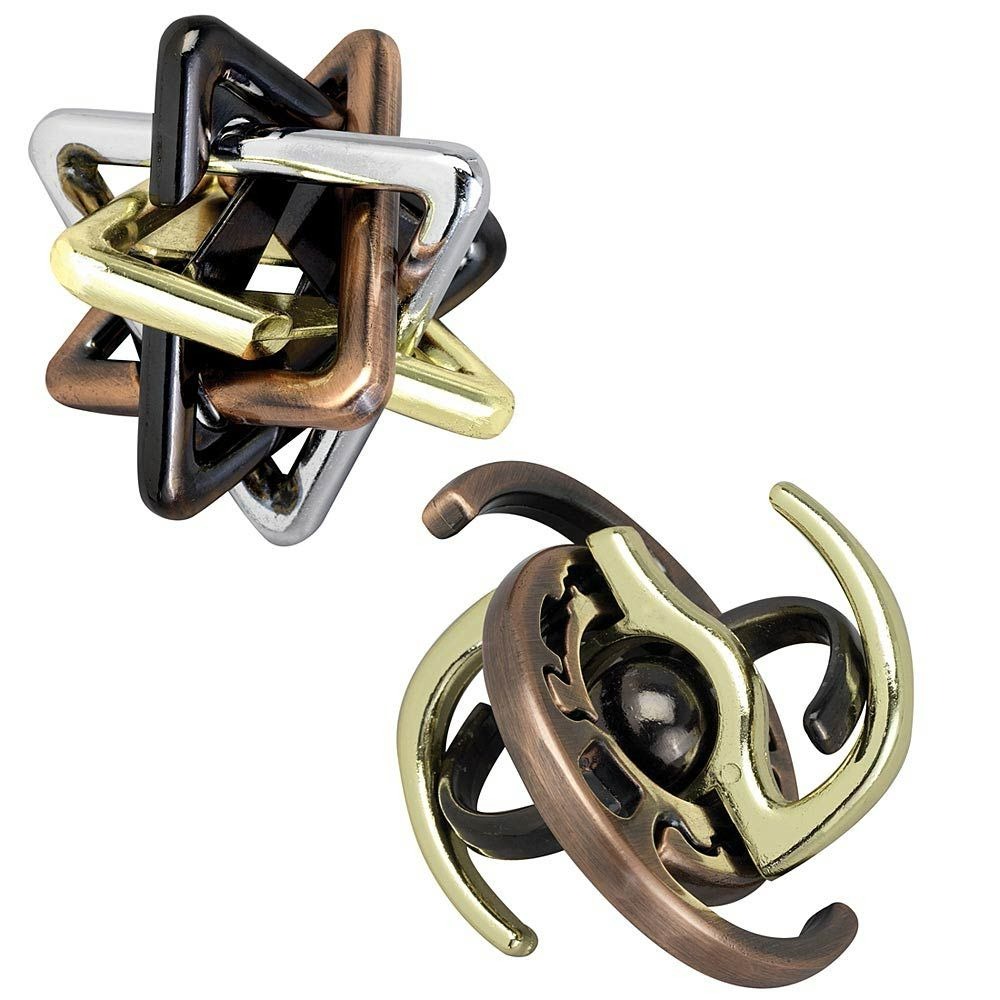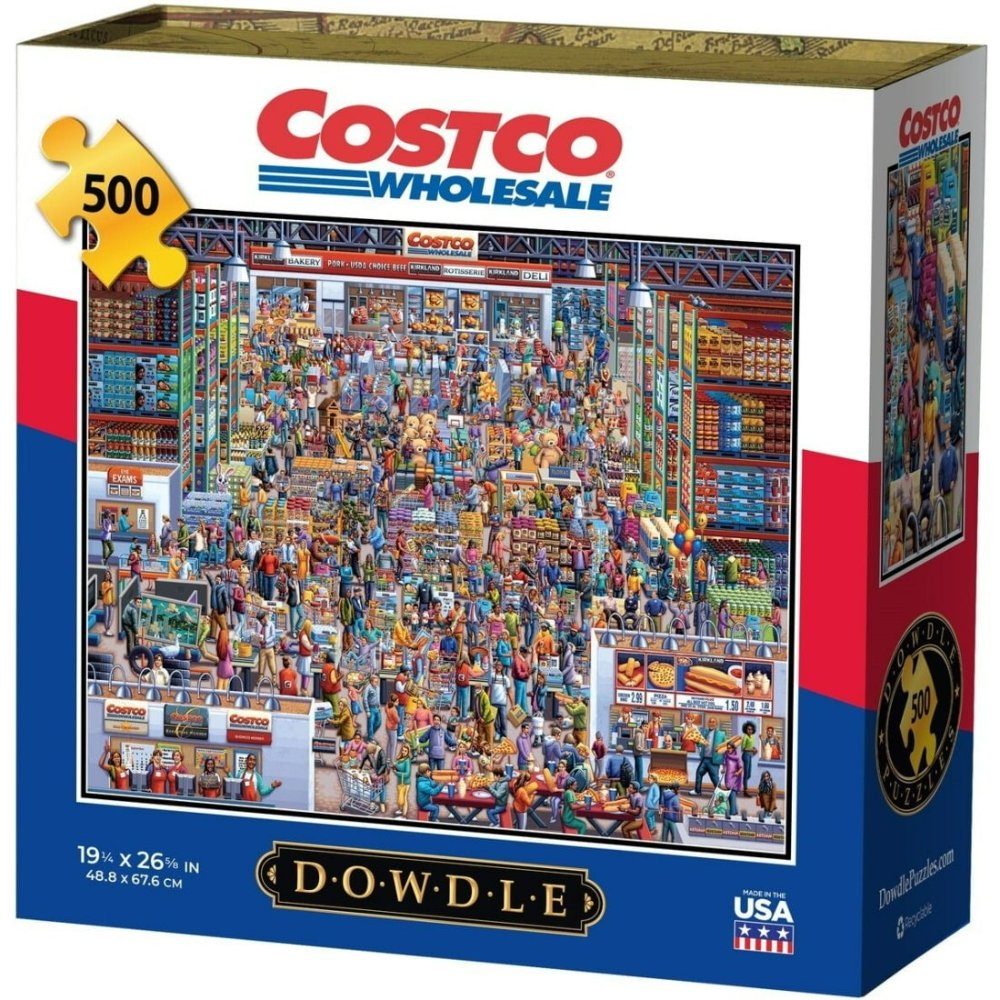Introduction to Metal Puzzles
Metal puzzles are fascinating brain teasers made from metal. These puzzles come in various shapes and complexities, captivating users of all ages. Unlike traditional puzzles made of wood or paper, metal puzzles offer a unique tactile experience. They often require sliding, twisting, or interlocking pieces to solve. This challenge makes them popular amongst puzzle enthusiasts who enjoy a durable and reusable challenge.
Originating centuries ago, metal puzzles have evolved into sophisticated designs. They often serve as both educational tools and intriguing decorative items. Their sturdy nature allows them to withstand frequent handling, perfect for hands-on puzzle-solving sessions. As puzzles, they are not just for entertainment; they also enhance problem-solving skills. By engaging with metal puzzles, users can improve their spatial awareness and cognitive abilities. Recognizing the shapes and understanding the mechanics behind them can be a gratifying experience. This engagement makes metal puzzles a sought-after choice for both personal enjoyment and educational purposes.

History and Evolution of Metal Puzzles
Tracing the history of metal puzzles reveals a rich evolution. Originating centuries ago, early designs were simplistic yet captivating. Initially crafted by blacksmiths as curiosities, these puzzles were used to demonstrate craftsmanship and wit. Over the years, metal puzzles have transformed considerably. The industrial revolution brought advanced tools and techniques, allowing for more intricate designs. By the 20th century, metal puzzles became popular as educational tools and collectibles. Today, advanced manufacturing technologies continue to shape metal puzzle designs, blending artistic creativity with engineering precision. This evolution mirrors the changes in societal interests and technological capabilities.
The Appeal of Metal Puzzles to Different Age Groups
Metal puzzles captivate minds across all ages. For children, they introduce the joys of problem-solving. The satisfaction of connecting pieces nurtures a growth mindset from an early age. These puzzles support learning through play, which is essential for child development.
For teenagers and young adults, metal puzzles provide a stylish break from digital stimuli. They stand out as cool, tactile items that can be shared with friends. Moreover, they challenge the creative and logical sides of the brain, fostering critical thinking skills.
Adults admire metal puzzle for their complexity and artistry. They’re seen as intelligent diversions from daily stress. Professionals use them to stimulate the mind during breaks. Hobbyists appreciate the craft behind each metal puzzle, often making it a part of their collectibles.
The elderly find joy and cognitive stimulation in metal puzzle. As brain exercises, they help maintain mental agility. They also serve as a bridge to younger generations, promoting engaging family time.
In essence, metal puzzles possess a timeless appeal. Their ability to attract and benefit various age groups is what makes them continuously desirable. By including metal puzzles in their lives, individuals of all ages can sharpen their minds and enjoy a shared hobby.
Creative Concepts in Metal Puzzle Design
Innovative concepts in metal puzzle design have taken the puzzle world by storm nowadays. Designers are tapping into creativity and technology to create metal puzzles that are not just solvable, but are also works of art.
Thinking Outside the Traditional Puzzle Box
Modern metal puzzles shatter the conventional idea of what a puzzle can be. They go beyond being mere brain teasers; they involve elements of storytelling and even interactivity. For example, some designers are producing puzzles that take solvers on a historical journey, adding context and depth to the challenge.

Incorporating Kinetic Elements
Kinetic metal puzzles are fascinating. They involve movement, not just to solve but as part of their charm. Solvers may twist and turn parts, with the puzzle morphing before their eyes. This dynamic quality adds a layer of enchantment to the solving experience.
Integration with Digital Technology
Astounding advancements have allowed for the fusion of metal puzzles with digital tech. Imagine solving a metal puzzle that interacts with a smartphone app to provide hints or reveal augmented reality elements. This integration opens up new possibilities for engagement and education.
Eco-Friendly and Sustainable Design
Sustainability is key in today’s designs, and metal puzzles are no exception. Some puzzles use recycled metals, and their durable nature implies longevity. Eco-conscious puzzle enthusiasts can enjoy a guilt-free experience while dabbling in their favorite pastime.
Multi-Functional Puzzles
Innovatively, puzzles now serve multiple purposes. A metal puzzle might also function as an elegant paperweight or a stylish desk accessory when not in use. This multifunctionality ensures that metal puzzles are not only challenging but also practical and aesthetically pleasing.
Personalized Puzzles
Customization has also found its way into metal puzzle. Buyers can request puzzles shaped like initials, favorite animals, or significant symbols. Personalized metal puzzles add a unique touch to this ancient form of entertainment, making them popular gifts and keepsakes.
Through these creative concepts, metal puzzles continue to captivate and evolve, establishing themselves firmly as timeless treasures in both intellectual and artistic communities.
The Role of Technology in Crafting Metal Puzzles
Advances in technology have revolutionized how metal puzzles are designed and produced. Here’s a closer look at the technological influences on metal puzzle creation:
Innovative Manufacturing Techniques
Computer-aided design (CAD) software is at the heart of metal puzzle innovation. This tool helps designers create more complex and precise puzzles. Lasers cut metal with accuracy, crafting intricate pieces that fit together perfectly. 3D printing also plays a role. It allows for rapid prototyping of puzzles, making the design process more efficient.
Precision Engineering
With modern machinery, precision is paramount. Manufacturers use computer numerical control (CNC) machines to carve fine details into metal. This ensures that every piece of the puzzle fits with exactness, enhancing the solving experience. It’s not just about looks; the feel of each piece matters for tactile feedback.
Smart Puzzle Features
Technology breathes new life into metal puzzles by adding smart features. Puzzles now come with embedded chips or magnets that trigger special effects. Some pieces may light up or change color when placed correctly. Others interact with apps, offering hints or creating a narrative for the puzzle solver.
Sustainable Production Methods
Eco-friendly technology is shaping the industry too. Manufacturers are using solar-powered machines and non-toxic coatings on metal pieces. These help reduce the environmental impact and meet the demand for sustainable products.
Technology enhances both the creation and the experience of metal puzzles. This blend of art and science keeps metal puzzles both challenging and relevant.

Tips for Solving Complex Metal Puzzles
Metal puzzles can be challenging, but there are strategies to help unlock their secrets. Whether you are a beginner or an experienced enthusiast, these tips will guide you in solving even the most complex metal puzzles.
Understand the Mechanics
Start by examining how the puzzle is put together. Look for any movable pieces and test how they can be manipulated. Get a feel for the puzzle’s structure before attempting to solve it.
Be Patient
Patience is key. Complex puzzles are not meant to be solved quickly. Spend time with your puzzle, and don’t rush through the process.
Think Logically
Apply logic to find the solution. Think about each move and its consequences. Sometimes, the solution is not about force but about the right sequence of actions.
Use Spatial Awareness
Enhance your spatial reasoning skills. Visualize the puzzle in three dimensions and plan your moves accordingly. This strategy is crucial for successful puzzle-solving.
Seek Patterns
Look for patterns or repetitions in the puzzle’s design. Recognizing these can provide clues on how to proceed.
Take Breaks
If you’re stuck, take a break. A fresh perspective can often lead to a breakthrough in your approach.
Don’t Force Pieces
Never force pieces to fit. Metal puzzles are designed to work smoothly when solved correctly. Forcing can damage the puzzle or obscure the correct solution path.
Practice Regularly
Improvement comes with practice. Solve different kinds of metal puzzle to build skills and boost confidence.
Following these tips can make the daunting task of solving complex metal puzzle more manageable. With practice and persistence, you’ll soon discover the joy of puzzling out these intricate brain teasers.
Where to Find and Purchase Metal Puzzle
For enthusiasts ready to embark on the journey of solving metal puzzle, knowing where to find and purchase them is crucial. Here’s a guide to help you obtain these enthralling brain teasers.
Specialty Stores and Puzzle Shops
Start by checking out local specialty stores and puzzle shops. These venues often curate a selection of high-quality metal puzzle from various designers and brands. It’s a great way to see and feel the puzzles before buying.
Online Marketplaces
Online marketplaces are treasure troves for metal puzzle. Websites like Amazon or Etsy feature a wide range of options, from classic designs to the latest innovations. You can easily compare prices and read customer reviews to make an informed decision.
Craft Fairs and Maker Spaces
Stay on the lookout for craft fairs and maker spaces. Independent artisans and craftsmen often sell their unique metal puzzle at these events. You might find a one-of-a-kind piece that no one else has.
Direct from Designers
Support designers by buying directly from their websites. It’s a way to ensure authenticity and to possibly get limited edition or personalized metal puzzles. Designers may also offer first-hand solving tips for their creations.
Educational Toy Stores
For metal puzzles aimed at youngsters, visit educational toy stores. These stores focus on puzzles that are designed to develop cognitive skills and problem-solving in a fun, engaging manner.
Collectibles and Antique Shops
For those who cherish vintage puzzles, explore collectibles and antique shops. You may unearth rare metal puzzles that have stood the test of time, adding historic value to your collection.
Puzzle Forums and Communities
Join online forums and communities dedicated to puzzles. Members often share information on where to buy, swap, or even craft metal puzzles. It’s also a great place to ask for recommendations.
When seeking metal puzzle, ensure you research and verify the authenticity of the product. Beware of imitations that may look similar but lack the quality and precision of genuine puzzles. Once you have found a reliable source, you can continue to build your collection and enjoy the challenge that each metal puzzle brings.


